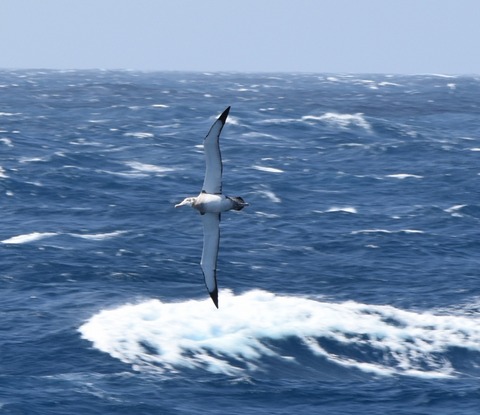
Taking a hiatus
Well, the stratigraphic correlators are a bit stressed right now, so I think I’ll hold off until tomorrow to visit them as we follow the core (I like to check in with the appropriate scientists before posting anything, just to make sure I have all my facts and figures straight). Instead I will attempt to paint you the picture of why exactly it is they are so stressed.
 Usually pictures paint a thousand words, but these photos just don’t do the seas any justice. You can see choppy whitecaps, but you can not see their affect on board. Today we heaved and rolled so much that there was some decent breakage in the mess hall, and people had to catch their plates before they slid off the tables. Personally, I love these conditions. I can’t stop thinking about how cool it would be to put a go-pro camera on top of the derrick! From a scientific standpoint, though, these conditions are the pits.
Usually pictures paint a thousand words, but these photos just don’t do the seas any justice. You can see choppy whitecaps, but you can not see their affect on board. Today we heaved and rolled so much that there was some decent breakage in the mess hall, and people had to catch their plates before they slid off the tables. Personally, I love these conditions. I can’t stop thinking about how cool it would be to put a go-pro camera on top of the derrick! From a scientific standpoint, though, these conditions are the pits.
While the pipe itself is relatively stationary – it looks like it’s heaving up and down, but really it is the ship rising and sinking around it – the core is hanging from a wire that is heaving up and down. Normally the core is shot when applied pressure build up causes the shear pins to break. But the heaving motion is causing the pins to shear prematurely, causing a misfire that results in a gap in the data. Gaps can not be correlated, so stratigraphic correlators get stressed. (Here you can see the motion of the ship. The left most splotch was our first hole, with relatively calm seas, and very little straying from the drill site. The other two show a much wider scatter pattern, reflecting our difficulty staying on station as the conditions have deteriorated.)
(Here you can see the motion of the ship. The left most splotch was our first hole, with relatively calm seas, and very little straying from the drill site. The other two show a much wider scatter pattern, reflecting our difficulty staying on station as the conditions have deteriorated.)